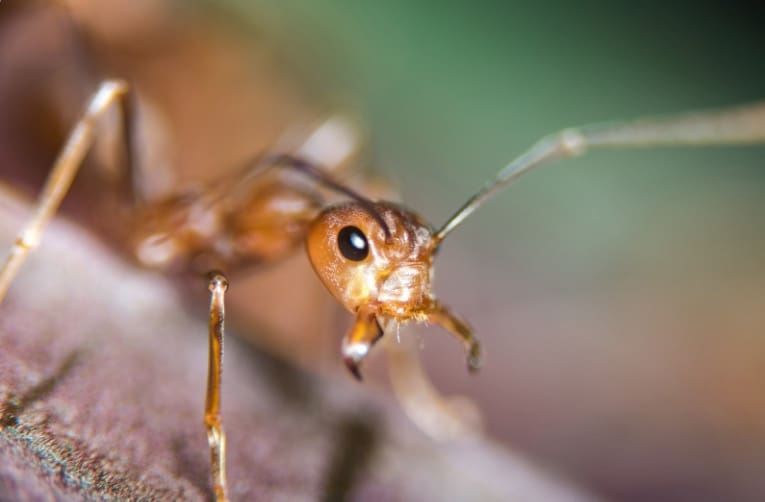
Which States Are Home to Fire Ants? A Detailed Guide For Homeowners
Fire ants, those notorious for their painful stings, have carved out a significant presence across the United States. With two main types, imported and native, these tiny but mighty insects have shown a strong preference for warm, sunny climates, steering clear of shaded areas.
While the imported varieties, including the red and black fire ants, were accidentally introduced, they've aggressively made themselves at home. Native species, though less aggressive, share the landscape. I'll dive into which states have become hotspots for these fiery invaders and where you might encounter them.
Overview
In my journey to understand where fire ants have made their home in the United States, I've dug deep into various sources and studies. The tale of their spread is both fascinating and a bit alarming. Imported fire ants, significantly the red and black varieties, have firmly established themselves as dominant pests in several states. These invasive species prefer warm and sunny climates, which dictate their distribution across the country.
I've learned that they are not just limited to one area but have spread to various regions, each presenting its challenges in managing and coexisting with these fiery invaders. The southern states, in particular, have become hotspots for fire ant activity. Here, the warm climate provides an ideal environment for fire ants to thrive, leading to significant concerns for residents and local wildlife.
Here's a quick snapshot of states where fire ants are most prevalent:
- Texas
- Oklahoma
- Mississippi
- Louisiana
- Florida
- Georgia
- South Carolina
- Alabama
In these states, encountering fire ants is not a matter of "if" but "when." These states' warm climates and suitable environmental conditions have allowed fire ants to establish sizable populations. Native species also exist, but their interaction with the more aggressive imported varieties has led to a complex ecological dynamic.
Understanding the specific conditions that allow fire ants to thrive is crucial for anyone living in or moving to these areas. It's not just about the discomfort or potential harm they can cause but also about the impact on local ecosystems and the challenges in controlling their spread. Fire ants' preference for sunny spots and their aversion to shade play into how and where they choose to establish their colonies, making some areas more prone to infestation than others.
Fire Ant Basics
When I first delved into the world of fire ants, I realized there's a wealth of information that's crucial for understanding these invasive creatures. From their distinct features to their complex life cycles, getting to know fire ants is the first step in managing their impact on our environments.
Identification
Identifying fire ants can be tricky to the untrained eye, but there are some key characteristics that set them apart. I've learned that both imported and native fire ants share a reddish-brown to black coloration, yet their sizes can vary within the same colony, ranging from 1/16 inch to nearly 1/2 inch in length. One distinct feature is their aggressive behavior, especially when their mounds are disturbed. Their painful stings, which often result in raised, itchy patches that can turn into blisters, are a telltale sign of their presence.
Biology and Life Cycle
Understanding the biology and life cycle of fire ants offers insight into their resilience and rapid spread. These insects are astonishingly adaptable, capable of surviving extreme conditions. The queen plays a pivotal role, with the ability to lay thousands of eggs during her lifetime. A typical fire ant colony includes the queen, male ants for reproduction, and worker ants, which handle foraging, nest building, and colony defense. What fascinated me the most is their ability to quickly rebuild and repopulate, even after major disruptions to their colonies.
Imported Fire Ants
Imported fire ants, primarily the red and black fire ants (Solenopsis invicta and Solenopsis richteri, respectively), have captured my attention due to their aggressive nature and the challenges they pose. Originally from South America, these ants have become established across various states in the U.S., thriving in warm, humid climates. Their introduction has had significant ecological impacts, displacing native species and disrupting local ecosystems. The challenge in managing their spread lies in their prolific breeding habits and the vast networks of colonies they can establish.
Native Fire Ants
In contrast to their imported cousins, native fire ants are often overshadowed by the impact and spread of the invasive species. However, they play an essential role in their ecosystems, contributing to soil aeration and the control of pest populations. Native fire ants, including species like Solenopsis xyloni, are generally less aggressive towards humans and have a more negligible impact on local ecosystems compared to the imported varieties. Understanding the differences between native and imported fire ants is crucial for developing effective management strategies that protect both human interests and environmental health.
States with Fire Ants
The presence of fire ants in the United States significantly impacts both the environment and the daily lives of residents in various states. Recognizing which states harbor these aggressive insects is essential for effective management and mitigation strategies. I'll delve into the regions most affected, categorizing them into southern and western states, to offer a clearer understanding of the fire ant's geographic presence.
Southern States
In the southern United States, fire ants have established a stronghold, benefiting from the warm and humid climate that parallels their native South American environment. The Red Imported Fire Ant (RIFA), Solenopsis invicta, in particular, has become a prevalent issue in this region. The states that report stable and substantial fire ant populations include:
| State | Presence of Fire Ants |
|---|---|
| Alabama | Confirmed |
| Arkansas | Confirmed |
| Florida | Confirmed |
| Georgia | Confirmed |
| Louisiana | Confirmed |
| Mississippi | Confirmed |
| New Mexico | Confirmed |
| North Carolina | Confirmed |
| Oklahoma | Confirmed |
| South Carolina | Confirmed |
| Tennessee | Confirmed |
| Texas | Confirmed |
| Virginia | Confirmed |
These states are not just battling sporadic sightings but dealing with infestations that impact agriculture, wildlife, and even the safety of residents due to the fire ants' painful stings. It's not uncommon for RIFAs to venture into homes, attracted to electrical equipment, which can lead to additional hazards like shorted circuits.
Western States
While the southern states bear the brunt of fire ant invasions, certain western states have also reported the presence of these invasive species. The climates in these areas can vary, but fire ants have adapted to find suitable habitats to colonize. The states in the western region with confirmed fire ant presence include:
- California: Here, fire ants have adapted to both urban and rural settings, affecting local ecosystems and communities.
- New Mexico: Though listed among southern states as well, its western geographical location makes it unique in experiencing fire ant invasions, emphasizing the pests' adaptability.
It's worth mentioning that fire ants' reach is not limited to the ground. They can infiltrate electrical systems, causing damage and hazards in more urbanized western environments, similar to the issues faced in the southern states. While the infestation levels in the western states might not yet rival those in the south, vigilance and management are crucial to prevent further spread and establish effective control measures.
Identifying Fire Ants
When exploring the pervasive issue of fire ants across various states, it's crucial to recognize these insects by their distinct features and behaviors. In this section, I'll delve into the key aspects that make fire ants, particularly the Red Imported Fire Ant (RIFA), a topic of concern and how their presence can impact local ecosystems, agriculture, and everyday life.
Physical Characteristics
Fire ants are unique, and understanding their physical characteristics is essential for proper identification. The Red Imported Fire Ant (Solenopsis invicta) possesses a red to brown body color, with a darker, almost black gaster. What sets them apart is their polymorphic nature, meaning workers vary in size, ranging from about 2.4 to 6 mm (1/8 to 1/4 inch) in length. This size variation within the same colony is a distinct attribute of fire ants.
Their anatomy includes two segments in the pedicel, often referred to as the waist, and their mandibles feature four distinct teeth. Moreover, fire ants have 10-segmented antennae ending in a two-segmented club, a detail not to be overlooked when trying to identify these invasive pests. A sting at the tip of their gaster is perhaps one of their most notorious features, responsible for the painful reactions many people and animals experience upon contact.
Behavior
Fire ants are not just known for their distinct physical characteristics but also for their remarkable and, at times, destructive behaviors. They are known to infiltrate electrical equipment, leading to significant damage. For example, in Texas alone, fire ants contribute to more than $140 million in damage per year by shorting out traffic lights. This disruptive behavior is a testament to their adaptability and the challenges in controlling their spread.
They produce powerful semiochemicals, including defensive and recruitment pheromones. These chemicals are key in their social structure and their ability to rapidly gather and defend their colonies. Their attraction to electrical equipment doesn’t stem from an allure to the electric or magnetic fields but appears to be a curious coincidence of their wandering nature. When they encounter electrical wiring, their instinctual biting and stinging behavior kicks in, creating shorts and attracting more ants to the location.
Furthermore, their nesting behavior is incredibly adaptive, allowing them to build colonies in both rural and urban settings. Soil disturbances near interior expansion joints of houses could indicate the presence of fire ants, highlighting their ability to invade personal spaces. Fire ant nests can sometimes house up to 200,000 ants, making them formidable communities that can rapidly expand and create new colonies. This prolific nature contributes significantly to their invasive status and the difficulties encountered in eradication efforts.
Dealing with Fire Ant Infestations
When it comes to fire ants, prevention and treatment are crucial to manage these invasive pests. Having dealt with fire ant infestations myself, I've learned that tackling the problem early and effectively can save a lot of hassle and damage in the long run. Let's dive into the details.
Prevention
Preventing fire ant infestations starts with understanding where and why they invade. Given their preference for warm climates, certain states are more prone to fire ant invasions. Keeping an eye on soil around your property for signs of fire ant mounds is a proactive measure. Regularly inspecting areas where fire ants are likely to nest, such as near electrical equipment, can prevent significant damage; remember, these pests cause over $140 million in damage in Texas alone due to their attraction to electrical systems.
One of the most effective preventive strategies I've found is to maintain a clean and clutter-free yard. Fire ants are attracted to food sources and moisture, so eliminating standing water and securing food waste can make your property less appealing to these pests. Additionally, consider treating the perimeter of your home with granular baits as a preventive measure, especially before the season they are most active in your area.
Treatment
Once fire ants have made their way into your space, it's time to shift gears towards treatment. The two-step method has been a game-changer for me, combining granular baits with direct mound treatment. Applying granular baits two to four times per year can control colonies before they become visible. I use holiday reminders—Easter, Independence Day, and Labor Day—to schedule these applications.
For mounds that appear despite preventive efforts, having a can of dry fire ant mound treatment on hand is essential. Products containing acephate work fast but might leave behind an odor, whereas treatments with deltamethrin or cyfluthrin are less odorous but slower acting. Personally, I've found that following the label directions precisely and using fresh bait increases the effectiveness of these treatments.
When choosing treatments, being mindful of the environmental impact is crucial. Some products, like those containing clothianidin or bifenthrin, can be toxic to aquatic life. I always ensure my treatment choices won’t inadvertently harm other wildlife or contaminate water sources. Organic options, such as d-limonene, have been effective for me, especially around edible gardens, due to their lower toxicity levels.
Though dealing with fire ant infestations requires vigilance and effort, I've found these strategies to be effective in keeping these invasive pests at bay.
Romex Pest Control Professional Fire Ants Service
When dealing with fire ants, the importance of professional intervention. Romex Pest Control has been a game-changer for homeowners battle against these invasive pests. The Romex Pest Control approach is not just about eliminating the problem at hand but also about understanding the behavior and biology of fire ants to ensure a long-term solution.
Firstly, Romex professionals start with a comprehensive inspection of the property. They're trained to identify not just visible mounds but also potential nesting sites that might not be evident to the untrained eye. This thoroughness is essential because fire ants are known to build extensive underground networks that simple over-the-counter treatments can't reach.
Following the inspection, Romex utilizes a two-pronged treatment strategy that combines baiting and direct mound treatment. The baits are designed to be carried back to the colony by worker ants, effectively reaching the queen and other members that stay underground. This method ensures that the treatment impacts the entire colony, including its reproduction capabilities.
The advantage of working with Romex Pest Control doesn't stop at their effective treatment strategies. Their team is also committed to using environmentally safe products that don't harm the surrounding ecosystem or pose risks to pets and humans. I've always appreciated this aspect, as it aligns with my commitment to maintaining a safe and healthy environment around my home.
Moreover, Romex offers follow-up services to monitor the situation and perform additional treatments if needed. This ongoing support is crucial because fire ants are persistent, and their colonies can recover if not thoroughly managed.
Managing fire ant infestations requires vigilance and a proactive approach. With Romex Pest Control, homeowners have seen firsthand how effective professional services can be in not just treating but also preventing future infestations. Romex Pest Control's expertise and dedication to safety have made a significant difference in keeping Souther homeowners' properties free from these annoying and invasive pests.
Conclusion
Tackling fire ant infestations is no small feat, but with the right help, it's entirely manageable. Romex Pest Control's methodical and environmentally conscious approach not only addresses current infestations but also helps prevent future ones. Its expertise and dedication are exactly what's needed to keep our homes and communities safe from these invasive pests. Trusting professionals like Romex means we can enjoy our outdoor spaces without the constant worry of fire ant encounters.
We hope you enjoy these informational articles. If you'd like to learn more about our eco-friendly pest control services, call (844) 955-2447.
Read More
Your Path to a Pest-Free Home or Business
Romex Pest Control is dedicated to keeping you, your children, and your pets safe. We offer an eco-friendly, child-friendly, and pet-friendly pest control solution that is guaranteed.
We are confident in solving all pest, rodent, and termite problems.
Romex Pest Control is fully insured and licensed in Texas, Oklahoma, Louisiana, and Mississippi.
Hours
M-F 8 am–5 pm
Sat 8 am–2 pm
Sun Closed
Established 2016 © Copyright 2025 Romex Pest Control










